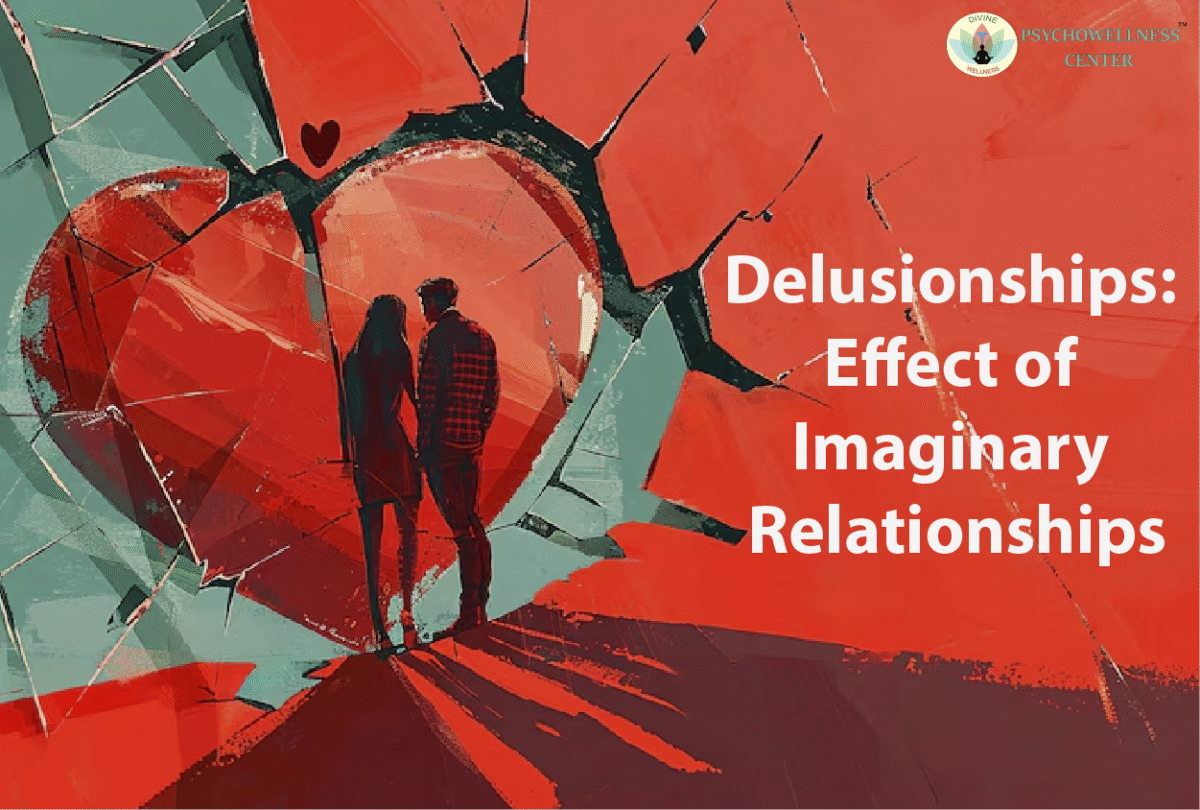In the age of social media and digital connections, it has become easier to form emotional bonds without real interaction. One term gaining attention in the field of psychology is “delusionship”, a situation where a person creates a one-sided or imaginary romantic relationship with someone who may not even be aware of their feelings. Though it may seem harmless at first, delusionships can impact emotional well-being, relationships, and self-perception. Let’s explore what delusionships are, why they happen, their psychological effects, and how therapy or counseling can help.
What Is a Delusionship?
A delusionship refers to a fantasized or imagined romantic relationship, often involving little or no real-life connection. The person in a delusionship believes or emotionally invests in a relationship that does not actually exist. It may involve:
- A crush on a celebrity or influencer
- Obsessing over a co-worker or acquaintance
- Assuming mutual interest based on limited interaction
- Imagining a relationship with an ex-partner that no longer exists
These imagined bonds are often built in the mind, sometimes to escape loneliness, low self-esteem, or avoid real-world emotional risk.
Why Do People Form Delusionships?
From a psychological point of view, there are several reasons someone might form a delusionship:
- Unmet Emotional Needs:- Many people long for love, validation, and connection. If these needs aren’t met in real life, they may seek emotional satisfaction through fantasy (Baumeister & Leary, 1995).
- Low Self-Esteem or Fear of Rejection:- People with low self-esteem may find it safer to imagine love than risk the pain of rejection. A delusionship offers emotional safety and control (Mikulincer & Shaver, 2007).
- Idealization of the Other Person:- In delusionships, the other person is often seen as perfect or flawless, which rarely happens in real relationships. This idealization creates a powerful emotional attachment to a fantasy (Holmes, 2002).
- Loneliness and Social Isolation:- When someone feels alone, they may turn inward and create imaginary scenarios for comfort. Social anxiety and isolation have been linked to increased daydreaming and attachment to imagined relationships (Cacioppo & Patrick, 2008).
Signs You May Be in a Delusionship
Being self-aware is the first step. Here are some common signs:
- Constantly thinking about someone you barely know
- Believing that the other person feels the same despite no real proof
- Avoiding real relationships in favor of the fantasy
- Feeling strong jealousy or hurt if the person talks to others
- Creating future plans or fantasies involving them
- If you feel emotionally hurt or confused by a relationship that isn’t real, you might be dealing with a delusionship.
Psychological Impact of Delusionships
Long-term participation in delusionships can lead to serious mental health consequences:
- Depression: When the fantasy collapses, it can result in emotional withdrawal, sadness, and hopelessness.
- Social Anxiety & Isolation: Avoidance of real interactions increases social withdrawal, reinforcing the fantasy world.
- Obsessive Thoughts / Rumination: Persistent thinking about the imagined person may disrupt daily life and sleep.
- Low Self-Esteem: Realizing the relationship isn’t mutual can heighten feelings of unworthiness and rejection.
- Attachment Disorders: Early relational trauma may make fantasy attachments feel safer than real intimacy.
- Erotomania (Delusional Disorder): In severe cases, individuals may develop the fixed belief that someone, often a public figure, is in love with them.
- Identity Diffusion: A preoccupation with fantasy may lead to confusion about one’s real goals and self-image.
- Insomnia and Poor Concentration: Obsessive thinking and emotional distress can affect sleep and focus.
- Unrealistic Expectations in Real Relationships:
Individuals may become dissatisfied with genuine connections, comparing them to idealized fantasy.
- Borderline Personality Traits: Some may experience unstable self-image and intense attachment or fear of abandonment, amplifying delusionship behaviors.
Role of Counseling and Therapy
Therapy can help individuals understand the root causes of their delusionship and develop healthier emotional habits. Mental health professionals often use:
- Cognitive Behavioral Therapy (CBT):- CBT helps challenge irrational beliefs, improve emotional regulation, and shift thinking patterns (Beck, 2011).
- Attachment-Based Therapy :- Exploring attachment styles provides insight into why some individuals feel drawn to unreciprocated bonds (Mikulincer & Shaver, 2007).
- Self-Esteem and Identity Building:- Counselors work to strengthen the client’s self-worth and sense of identity, reducing dependency on imaginary validation.
Tips to Move Beyond a Delusionship
If you think you are in a delusionship, here are steps to move forward:
- Acknowledge the Fantasy: Reflect honestly on whether the relationship exists in reality.
- Limit Exposure: Avoid constant checking of social media or consuming content that fuels the illusion.
- Focus on Self-Care: Engage in real-life interests, hobbies, and social networks to build confidence.
- Seek Real Connection: Form friendships or explore dating in safe, respectful environments.
- Talk to a Therapist: Counseling provides structured support to navigate emotional detachment and personal growth.
Conclusion
Delusionships may start as comforting daydreams, but when they interfere with real-life relationships and emotional health, they become a concern. They often reflect deep unmet emotional needs, low self-esteem, or even attachment disorders that can be addressed through therapy. Understanding that you deserve real, mutual love is key. If you find yourself stuck in a one-sided or imaginary bond, you’re not alone. With the right help, healing is possible, and fulfilling connections can be formed.
Contributed by Ms. Sakshi Dhankhar, Counselling Psychologist
This blog was posted on 23 June 2025
References
- Baumeister, R. F., & Leary, M. R. (1995). The need to belong: Desire for interpersonal attachments as a fundamental human motivation. Psychological Bulletin, 117(3), 497–529.
- Beck, J. S. (2011). Cognitive behavior therapy: Basics and beyond (2nd ed.). Guilford Press.
- Cacioppo, J. T., & Patrick, W. (2008). Loneliness: Human nature and the need for social connection. W.W. Norton.
- Holmes, J. (2002). Attachment theory: A practical guide for clinicians. Brunner-Routledge.
- Mikulincer, M., & Shaver, P. R. (2007). Attachment in adulthood: Structure, dynamics, and change. Guilford Press.

